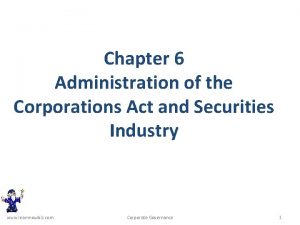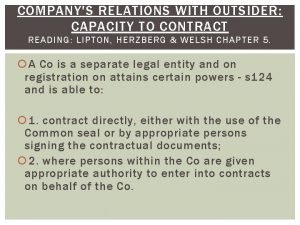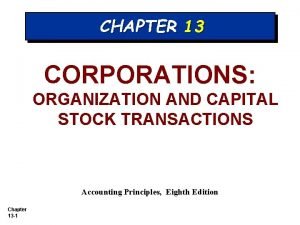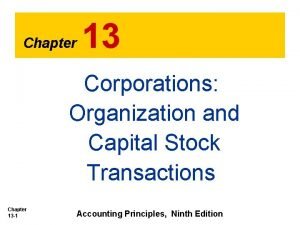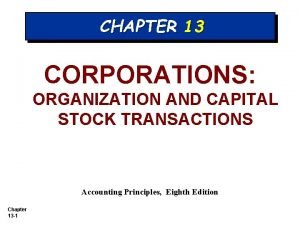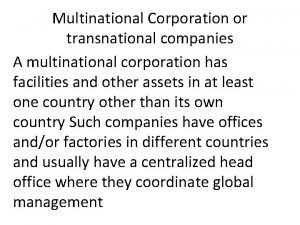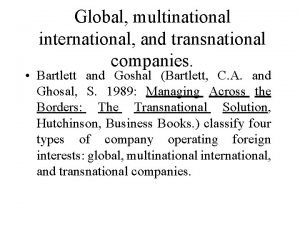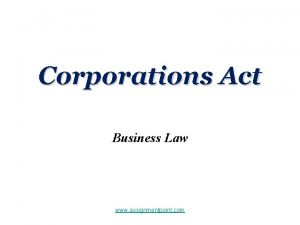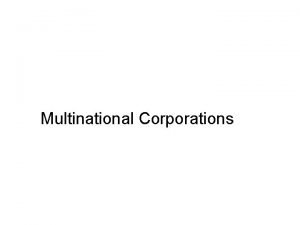Chapter 6 Administration of the Corporations Act and









- Slides: 9

Chapter 6 Administration of the Corporations Act and Securities Industry www. learnnowbiz. com Corporate Governance 1

Sources of Regulation Company law is made up of a combination of legal rules that allow companies to act as commercial enterprises and rules that regulate their activities. The regulation process involves: • The parliament making laws (including the Corporations Act). • The treasurer and ASIC administrating those laws. • The courts resolving disputes under those laws.

Sources of Regulation Companies that list on the ASX are also required to comply with the ASX listing rules. In 2010 ASIC took over from the ASX the supervision of trading on Australia’s licensed markets. ASIC also issues and administers Market Integrity Rules that regulate market operators, participants and financial products. The accounting standards also provide a source of regulation.

The Courts The Corporations Act grants powers to both State and Supreme Courts and Federal Courts to deal with civil breaches and state/territory courts for criminal offences. Companies can also be sued in local/district courts for debts, just like a person.

Legislation The Corporations Act is the main statute providing legislation for companies. • Federal act • Deals with formation, management, operation and termination of companies • Regulates takeovers, managed investment schemes, licensing and disclosure rules, financial products, services and markets. Under the constitution, the power to make laws relating to companies belongs to each state. In August 2001 the states agreed to refer this power to the commonwealth and the Corporations Act 2001 was passed.

ASIC was established by Commonwealth legislation in 1989 (called the ASC at the time) and underwent a name change and increased role in 1998. It is the principle authority for administration for the Corporations Act. The ASIC Act 2001 confers powers upon ASIC to administer the Corporations Act and police the activities of companies.

ASIC’s main functions: • Register companies. • Gather and disseminate information about companies • Educate companies and individuals about the corporations law. • Modify the Corporations Act in certain circumstances. • Register companies’ auditors and liquidators. • Investigate breaches of the Corporations Act. • Refer appropriate matters to the DPP for prosecution in criminal cases. • License and regulate people and businesses in consumer credit activities. • License and monitor financial services businesses. • Supervise trading on Australia’s licensed markets and regulate market operators, market participants and financial products.

ASIC’s New Powers Legislation was passed in 2010 conferring important new responsibilities upon ASIC: • Transferring the market supervision role from the ASX to ASIC. • Providing additional powers to ASIC to investigate and penalise individuals and corporations for market misconduct.

The ASX acts as a regulator as it polices compliance with the ASX Listing Rules. It is a publicly listed company, not a government body. S 792 D of the Corporations Act requires it to cooperate with ASIC in the performance of ASIC’s functions. When companies list on the ASX they are contracted to comply with the ASX listing rules. The Listing Rules exist to ensure that the securities markets are transparent, liquid and informed and that the interests of shareholders are protected.

